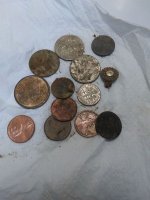Assembler
Silver Member
- May 10, 2017
- 3,103
- 1,184
- Detector(s) used
- Whites, Fisher, Garrett, and Falcon.
- Primary Interest:
- Prospecting
- Thread starter
- #21
Got lucky at an estate sale and got the following for very little cost that I believe will work for one box that is both 110 / 220 volts:
13 gallon 1 HP High Flow Dust Collector
https://www.harborfreight.com/13-ga...llector-31810.html?_br_psugg_q=dust+collector
Also will play with the following for more than one box at around 23 percent off:
35 Gallon, 2 HP High-Flow High-Capacity Dust Collector
https://www.harborfreight.com/power...-flow-high-capacity-dust-collector-59726.html
I hope my projects are not just a 'blow over' with all the wind within...........LOL.
13 gallon 1 HP High Flow Dust Collector
https://www.harborfreight.com/13-ga...llector-31810.html?_br_psugg_q=dust+collector
Also will play with the following for more than one box at around 23 percent off:
35 Gallon, 2 HP High-Flow High-Capacity Dust Collector
https://www.harborfreight.com/power...-flow-high-capacity-dust-collector-59726.html
I hope my projects are not just a 'blow over' with all the wind within...........LOL.
Last edited:








